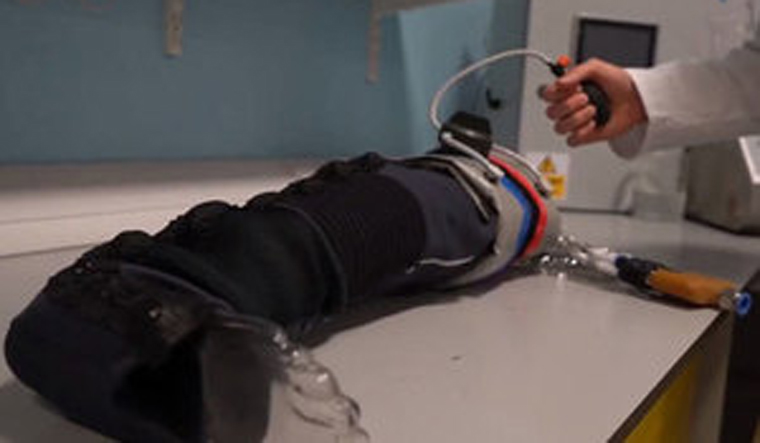British biomedical engineers have developed a technique to treat battlefield injuries that could lead to reduction in limb amputations.
The technique primarily involves a newly developed tourniquet that applies pressure at different points on the injured limb, thus reducing pressure and damage to specific areas. A cooling ‘sock’ is then wrapped around the tissue, to preserve it from further damage until the injured soldier can be evacuated to a field or base hospital. Once at a hospital, the limb is placed inside a protective ‘box’, which can sustain the injured portion while doctors attempt treatment. The box has specially decontaminated air to reduce infection and continually supplies the affected area with blood.
Weighing only 5kg, the three-part kit—tourniquet, cooling sock and protective box—has been created in response to the experiences of Iraq and Afghanistan where landmines and improvised explosive devices (IEDs) have caused traumatic injuries to soldiers. The system could also be used in a non-military setting, for example, natural disasters or remote locations. It will soon be available commercially following successful trials, and could one day form part of the medical kit in every front-line unit.
The technique has been developed by researchers at the University of Strathclyde, Glasgow, and funded by the UK's Defence Science and Technology Laboratory. “While this technique may not be right for every injury, it is a hugely important innovation, which could save the limbs of many more of those affected,” said Dr Neal Smith, capability adviser, medical sciences, from DSTL.
Professor Terry Gourlay, head of the department of biomedical engineering at Strathclyde University, said, “We looked at every stage of the journey an injured soldier follows after injury to ensure our solution was designed specifically for them. The system we have developed is essentially a life-support system for the limb, which gives doctors precious time to attempt to repair damage while ensuring the safety of the patient.”
Professor Gourlay’s team also pioneered the blood-salvaging technique known as HemoSep, which allows blood lost in surgery to be transfused directly back to the patient, reducing the need to donated blood. A military version of the HemoSep project was also funded by DSTL.

